Münzing
Continuous Improvement of Münzing’s FOAM BAN® Defoamers
By Justin Mykietyn, Manager – Industrial Fluid Applications | TLT CMF Plus November 2019
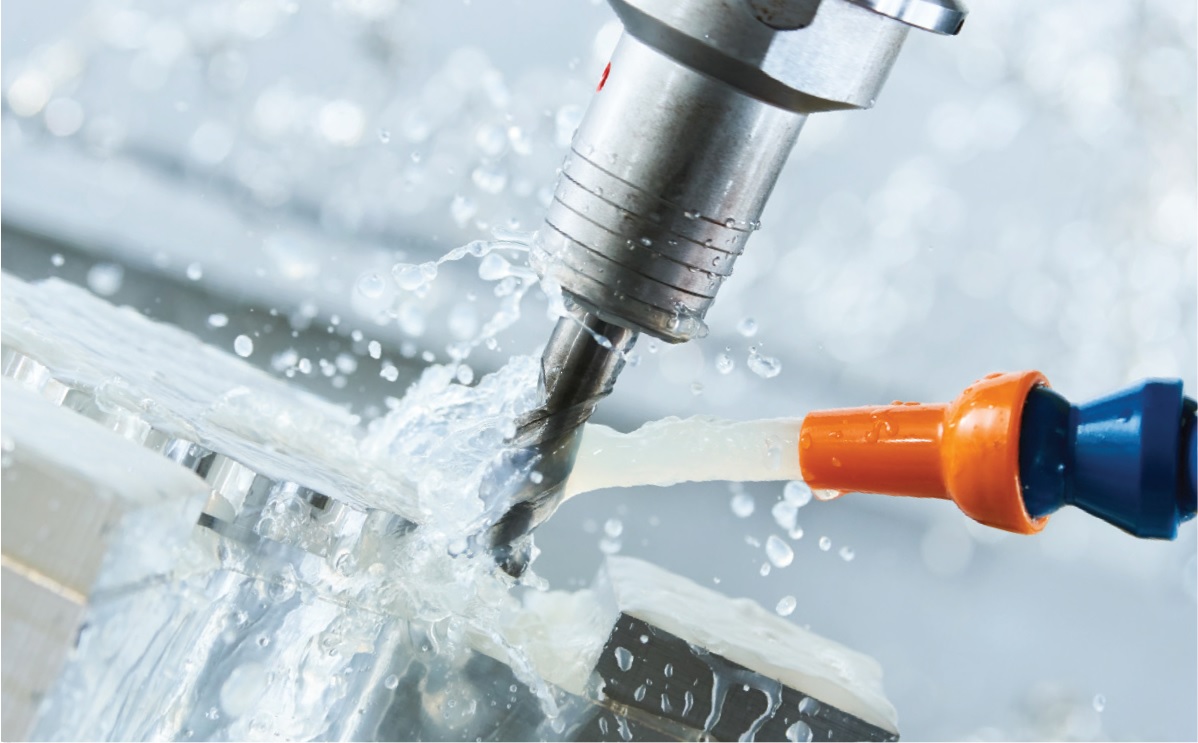 © Can Stock Photo / kadmy
© Can Stock Photo / kadmy
Defoamers must be insoluble in the fluid in order to provide foam control but need to remain dispersed in the concentrate to avoid instability. This often results in a trade off where products with better compatibility provide less foam control and vice versa.
More than 3 decades ago it was identified that a crosslinked, 3-dimensional (3D) siloxane provided superior foam control in metalworking fluids than previous technologies. Many products were developed to successfully utilize this technology. (
Figure 1)
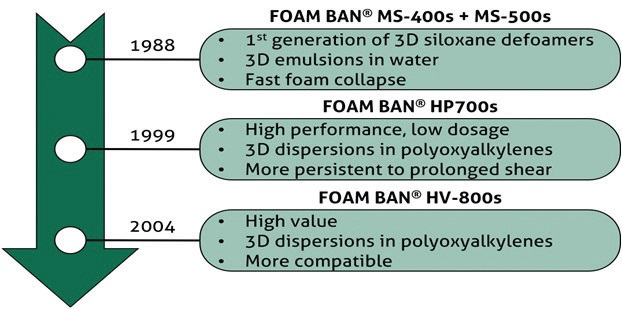 Figure 1.
Figure 1.
A defoamer’s foam control property includes foam collapse, persistence to prolonged shear, persistence to age and filterability. The compatibility property includes concentrate compatibility upon aging at different temperatures, compatibility with the dilution and the defoamer’s ability to be washed off to avoid defects in painting. The balance of these two properties can be visualized as a plot of foam control vs. compatibility. (
Figure 2)
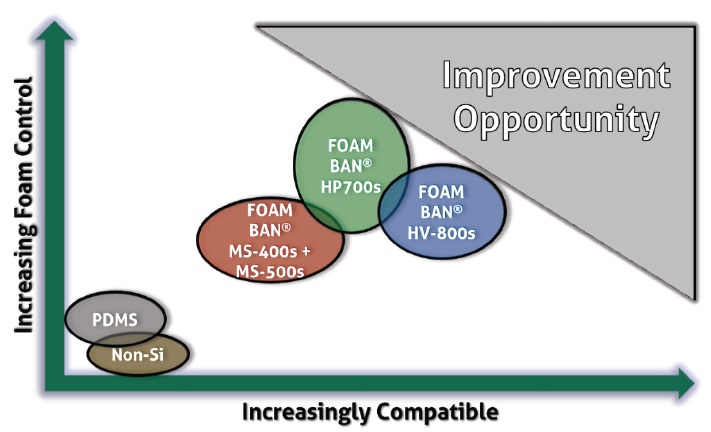 Figure 2.
Figure 2.
Standard defoaming technologies are not effective enough in metalworking fluid applications. Silicone (PDMS) emulsions create defects in painting. Oil based, non-Si, defoamers have compatibility and filterability concerns. Molecular defoamers do not provide a fast foam collapse.
The traditional 3D siloxane technology has been used to overcome the limitations of these standard technologies. However, there remains an opportunity for further improvement.
Münzing’s Next Generation 3D Siloxane Technology Based Defoamers
Foam is always a concern in metalworking fluid operations. It has become especially challenging as fluids are:
•
Used at higher pressures
•
Used in smaller sumps
•
Expected to last longer with less make up
•
Reformulated to meet new regulatory and safety requirements
Understanding where we’ve been, allows us to know where we are going. The traditional product lines represent many individual products that were tailor made to solve a problem in different metalworking fluids. Münzing looked to these past products and used it as a road map to develop a breadth of new products, the FOAM BAN® HP900, 1800 and 1500 series, similarly tailored to different fluids. (
Figure 3)
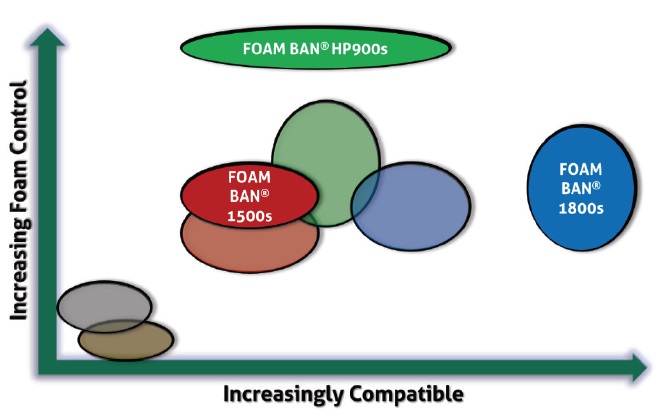 Figure 3.
Figure 3.
For these reasons there has been a perpetual need for a better defoamer. To improve the defoamer Münzing identified the next generation 3D siloxane technology that is exceptionally resistant to shear providing drastically more persistent foam control. The next step was to reinvent the emulsifier package and create a range of packages tailored to provide enhanced concentrate compatibility.
While all formulated defoamers need to be mixed prior to use to achieve optimal results, these next generations of defoamers were designed to be inherently more stable than previous generations making them easier to handle.
The performance properties of the products are evaluated on a laboratory scale using a combination of different test methods.
•
Hand and mechanical shake tests: provides insight into foam collapse.
•
Recirculation testing (w or w/o filters): gives information on the defoamers persistence to prolonged shear.
•
Compatibility: visually assessing separation, sediment or haze during aging at 5 ˚C, 25 ˚C and 50 ˚C.
Example: Semi-Synthetic Metalworking Fluid
Objective: Historically, a FOAM BAN® MS-500 Type defoamer has been used in a metalworking fluid concentrate with 15% oil content. The goal of this testing is to identify a more compatible and persistent solution to foam control.
Conclusion:
•
The FOAM BAN® HP900 Type defoamers displayed better concentrate compatibility as no sedimentation at the bottom was observed after 21 days of aging at 50°C. (
Figure 4)
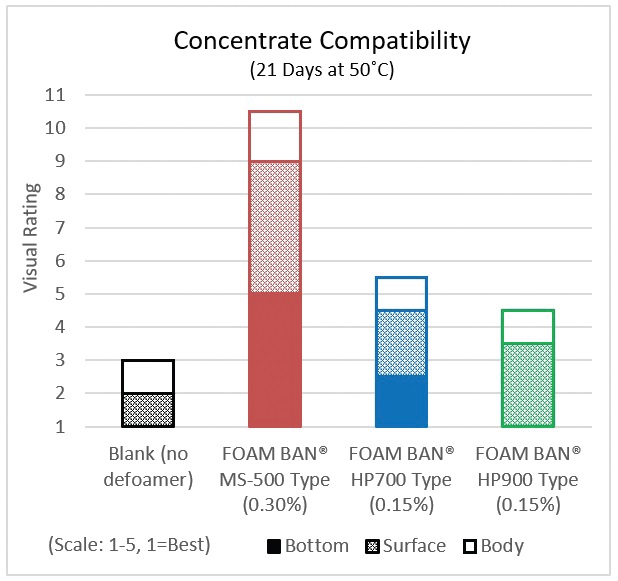 Figure 4.
Figure 4.
•
All product types provided a fast foam collapse in shake testing. (
Figure 5)
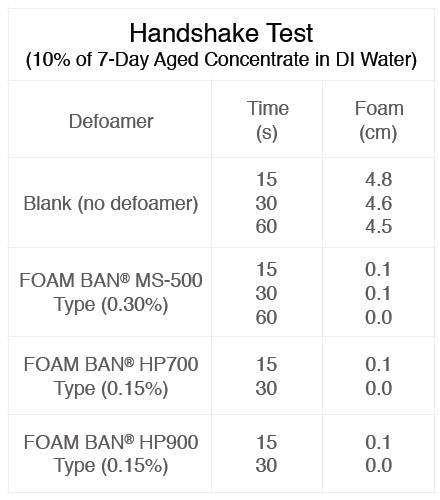 Figure 5.
Figure 5.
•
FOAM BAN® HP900 Type products provided the most persistent foam control under prolonged shear and 30um polypropylene filtration. (
Figure 6)
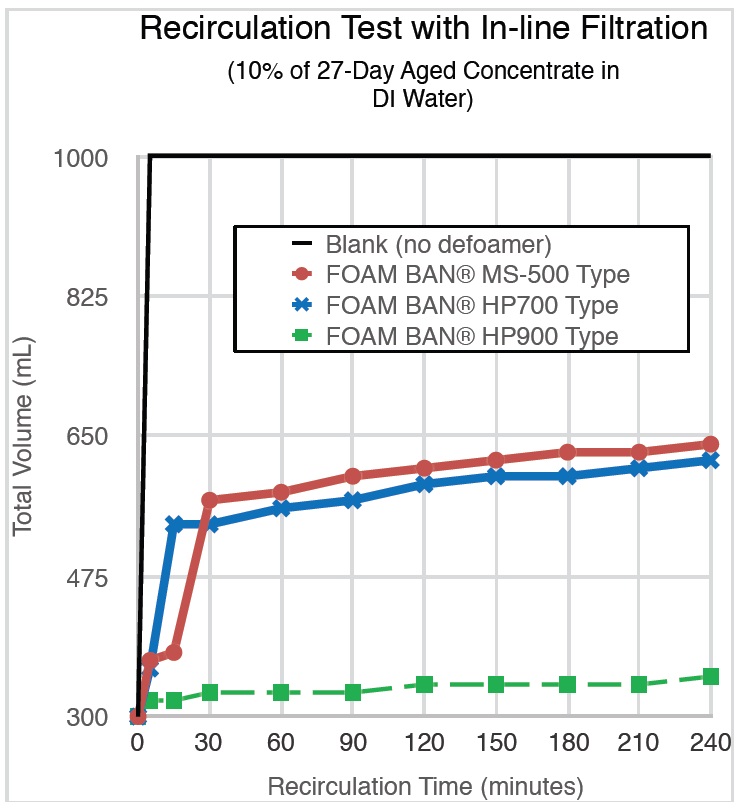 Figure 6.
Figure 6.
•
This indicates they are more effective than the previous product types.
•
Münzing is a service driven company. This example represents the type of testing Münzing’s technical service laboratory performs.
•
We welcome the opportunity to provide you with an improved foam control solution by evaluating the new product lines or tailor making a new defoamer to achieve optimal foam control and compatibility, if needed.